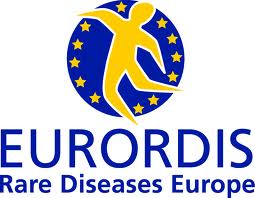Engaging with patients

Healthcare guideline development is usually driven by national healthcare organisations and professional associations and mainly focused on the management of common conditions. However, in order to have recommendations to support decisions for the management of rare diseases, patient organisations have been promoting the development of guidelines for rare diseases.
Two patient representatives, Dr Mathieu Boudes - Operations and projects manager at EURORDIS - and Avril Kennan - Head of Research and Advocacy at DEBRA Ireland, the patient association which gives support to families living with epidermolysis bullosa in Ireland - share with us their experience in the development of guidelines on rare diseases and in their involvement in the RARE-Bestpractices project.
Avril, you are leading the DEBRA International project which aims to develop health care guideline for epidermolysis bullosa. Why did DEBRA International initiate this project?
Avril Kennan: Epidermolysis bullosa is a rare disease and there is limited clinical expertise to treat it. This has led to major inconsistencies in care for patients across Europe and the world, which we want to address. Clinicians are also desperately in need of more guidance to treat this complex and multi-systemic condition. This project has become a major focus for us and we are supported by our member organisations who rank it as the top priority for DEBRA International.
What kind of support could patient organisations bring to the development of health care guidelines?
Mathieu Boudes: Patient organisations are well placed to drive the development of guidelines on rare diseases. These organisations provide a link between all the relevant stakeholders involved in patient care. This is especially true among the rare disease community where patient organisations are often operating on an international basis, necessitated by the rarity of the condition they support. This places them in a perfect position to facilitate the development of guidelines by bringing together the necessary players.
Avril Kennan: Patient organisations bring a true understanding of the needs of patients living with chronic and complex conditions and can provide the funding required to support the process.
What added value do you foresee from the EU-funded RARE-Bestpractices project?
Avril Kennan The patient organisations and the RARE-Bestpractices partners share the common goal to increase the overall quality of guidelines on RD and to raise the awareness about the importance of devoting resources to support the development of guidelines on rare diseases. Furthermore one of the aims of Rare-BestPractices is to explore the challenges in developing guidelines to improve the management of rare disease patients and this will be strongly welcomed by the RD community.
How are the patient representatives involved in the RARE-Bestpractices project?
Mathieu Boudes: To give a simple example, two patients representatives at the workshop organised in Edinburgh by the Healthcare Improvement Scotland, on the assessment of the AGREE methodology, to appraise rare disease guidelines. I attended on behalf of EURORDIS and EURORDIS invited Avril to attend. During this workshop opinions of the patient representatives were respected as valuable contributions. We saw this opportunity as a win-win situation as we, as patient representatives, learnt more about the AGREE tool and the appraisal of clinical practical guidelines and this knowledge will be passed on to EURORDIS members.
Avril Kennan: The DEBRA International project will benefit from the knowledge I gained at the workshop and the connections I made with all the participants.
To conclude, what would the involvement of EURORDIS and the EURORDIS’ members patient organisations add to the outcomes to the RARE-Bestpractices?
Avril Kennan: The voice of the patient is particularly important when it comes to rare disease management. Therefore, the involvement of patients in clinical guidelines development, appraisal, and dissemination is crucial, to ensure that guidelines can work in a practical setting and are adopted by both the clinical and patient populations. As a patient organisation -member of EURORDIS, I would say that the involvement of EURORDIS in the RARE-Bestpractices project will build the capacity of patient organisations to develop, collect and appraise guidelines. Patient organisations also bring a different and valuable perspective to the processes and help to ensure that the ultimate outcome is improved patient care.
Mathieu Boudes: I fully agree with Avril’s statement and this is one of the raison d’être of having EURORDIS as a partner of the project RARE-Bestpractices.